*NURSING > CASE STUDY > Diana Humphries _ Diabetic Ketoacidosis (DKA)_Case Study Clinical Reasoning - 2020 | NR 466 Diabetic (All)
Diana Humphries _ Diabetic Ketoacidosis (DKA)_Case Study Clinical Reasoning - 2020 | NR 466 Diabetic Ketoacidosis (DKA) Case Study Clinical Reasoning
Document Content and Description Below
Diabetic Ketoacidosis (DKA) Jenna Vest, Kaylee Locker, Aida Gutierrez Diana Humphries, 45 years old Primary Concept Fluid and Electrolyte Balance Interrelated Concepts (In ... order of emphasis) 1. Acid-Base Balance 2. Glucose Regulation 3. Infection 4. Pain 5. Clinical Judgment 6. Patient Education 7. Communication 8. Collaboration UNFOLDING Reasoning Case Study: STUDENT Diabetic Ketoacidosis (DKA) History of Present Problem: Diana Humphries is a 45-year-old woman with chronic kidney disease stage III and diabetes mellitus type1 who checks her blood sugar daily, or whenever she feels like it. She has been feeling increasingly nauseated the past 12 hours. She has had a harsh, productive cough of yellow sputum the past three days. She checked her blood glucose before going to bed last night and it was 382, but then she fell asleep early and missed her bedtime dose of glargine (Lantus) insulin. When she awoke this morning, she had generalized abdominal pain and continued to feel nauseated and had a large emesis. Her glucometer was unable to read her blood glucose because it was too high. She took 10 units of lispro (Humalog) insulin this morning. Her nausea has increased all morning and she has been unable to eat or keep anything down despite having an increased thirst and appetite. She also has had increased frequency of urination. When her lunchtime glucometer gave no reading because it was too high and out of range, she called 9-1-1 to be evaluated in the emergency department (ED). Personal/Social History: Diana has been inconsistently compliant with her medical/diabetic regimen due to her struggles with anxiety and depression that have worsened since her mother died three months ago. She considers 200 a good blood sugar reading. She is divorced with no children and has been homeless and has lived in a shelter off and on the past month. She is on Social Security disability because of complications related to diabetes. At one point during the intake interview, she expressed to the nurse, “I’m going to die anyway, why does all this matter?” What data from the histories is RELEVANT and has clinical significance to the nurse? RELEVANT Data from Present Problem: Clinical Significance: Missed dialysis Persistent nausea, large emesis Cough, yellow sputum Missed dose of Lantus Glucometer unable to register waste products will accumulate (including potassium) and fluid imbalance Red flag for DKA in a diabetic patient on dialysis Colored sputum is indicative of infection, in this case possible pneumonia. Pneumonia increases the likelihood of DKA in a diabetic patient Lantus is a long acting insulin. The short acting insulin (Humalog) she took in the morning could not regain control of her blood sugar alone. Most glucometers have an ability to read up to 500, an inability to register means an extremely high blood glucose. RELEVANT Data from Social History: Clinical Significance: Inconsistent with medical/diabetic regimen Anxiety/Depression Denial of issue/knowledge deficit Homeless/Shelter/disability Inability to maintain health status, inability to adhere to medication regimen Lack of self-care, inability to learn Inability to comprehend education, lack of knowledge on disease and appropriate treatment Lack of resources, lack of stability What is the RELATIONSHIP of your patient’s past medical history (PMH) and current meds? (Which medication treats which condition? Draw lines to connect) PMH: Home Meds: Pharm. Classification: Expected Outcome: • Chronic Kidney disease stage III (diabetic nephropathy) • Anemia • Diabetes mellitus type 1 since age 12 • Diabetic retinopathy • Neuropathy in lower legs • Hyperlipidemia • Hypertension • Coronary artery disease • Gastroesophageal reflux disease (GERD) • Anxiety • Depression 1. Aspirin 81mg PO daily 2 .Lisinopril 10 mg PO daily 3. Lorazepam 1mg PO bid prn 4. Citalopram 40 PO mg daily 5. Zolpidem 10 mg PO at HS prn 6. Gabapentin 300 mg PO bid 7. Labetalol 200 mg PO bid 8. Omeprazole 20 mg PO daily 9 .Simvastatin 40 mg PO HS 10. Glargine insulin 50 units SQ at HS 11. Lispro insulin SQ sliding scale AC and HS 1. Salicylate 2.ACE inihibitor 3. Benzodiazepine 4. SSRI 5. Nonbenzodiazepine 6. Anticonvulsant, GABA analogue 7. Beta Blocker 8. Proton Pump Inhibitor 9. HMG-CoA reductase inhibitor, “statin” 10. Long acting Insulin 11. Short acting Insulin 1. Low dose aspirin helps prevent cardiac events 2.Reduce blood pressure, reduce CAD events 3. Sedate/reduce anxiety 4. Anti-depressant 5. Aid with sleep 6. Reduce nerve pain 7. Reduce Blood Pressure 8. Reduce symptoms of GERD 9. Reduction of cholesterol production 10. Glucose management 11. Glucose management - - - - - - - -- -- - - - - - -- - - - Assessment: Current vital signs: Temp 100.2, pulse 88, resp 20, BP 148/84, O2 sat 95% RELEVANT body system nursing assessment data: respiratory, cardiac, vitals RELEVANT lab values: Potassium 5.1, Glucose 578, Sodium 125, Creatinine 2.2, BUN 50 TREND of any abnormal clinical data (stable-increasing/decreasing): Potassium stable, Sodium increasing, Glucose decreasing, Creatinine decreasing, BUN decreasing How have you advanced the plan of care? Patient remains on therapeutic plan and is trending in the right direction, will continue to treat and monitor Patient response: Patient is less anxious, appears in less pain, is resting comfortably, is Alert and Oriented X 3, is tolerating treatment well, and steadily improving INTERPRETATION of current clinical status (stable/unstable/worsening): Stable Recommendation: Suggestions to advance plan of care: Follow up with collaborative team, repeat labs, reassess patient status Education Priorities/Discharge Planning 1. What will be the most important discharge/education priorities you will reinforce with her medical condition to prevent future readmission with the same problem? Patient teaching about current chronic diseases and appropriate maintenance, therapeutic actions to take, medication adherence, and social support. 2. What are some practical ways you as the nurse can assess the effectiveness of your teaching with this patient? Include the patient in your teaching and discussion. Find out simple ways it may be easier for her to adhere to treatment that fit into her lifestyle. Give the patient tips for remembering her medications and appointments like a Pill box by day of the week and a planner. Have the patient write things down and read them back to you. Caring and the “Art” of Nursing 1. What is the patient likely experiencing/feeling right now in this situation? The patient may be feeling anxious and overwhelmed- like this is all too much for her to handle, especially if she has limited resources and/or support. 2. What can you do to engage yourself with this patient’s experience and show that he/she matters to you as a person? Talk with the patient about what obstacles she faces in caring for herself and adhering to treatment. Empathize with her situation and try to provide easy logical solutions. Provide the patient with emotional support and any information about resources that may help her once she is discharged, Use Reflection to THINK Like a Nurse Reflection-IN-action (Tanner, 2006) is the nurse’s ability to accurately interpret the patient’s response to an intervention in the moment as the events are unfolding to make a correct clinical judgment. 1. What did I learn from this scenario? The patient’s situation makes it hard for her to adhere to her treatment. Her chronic conditions can cause a quick overall decline and cascade of issues if she misses her daily treatments and medications. The patient needs support and guidance in order to adhere to ger treatment. The patient needs additional resources and social and emotional support. 2. How can I use what has been learned from this [Show More]
Last updated: 1 year ago
Preview 1 out of 24 pages
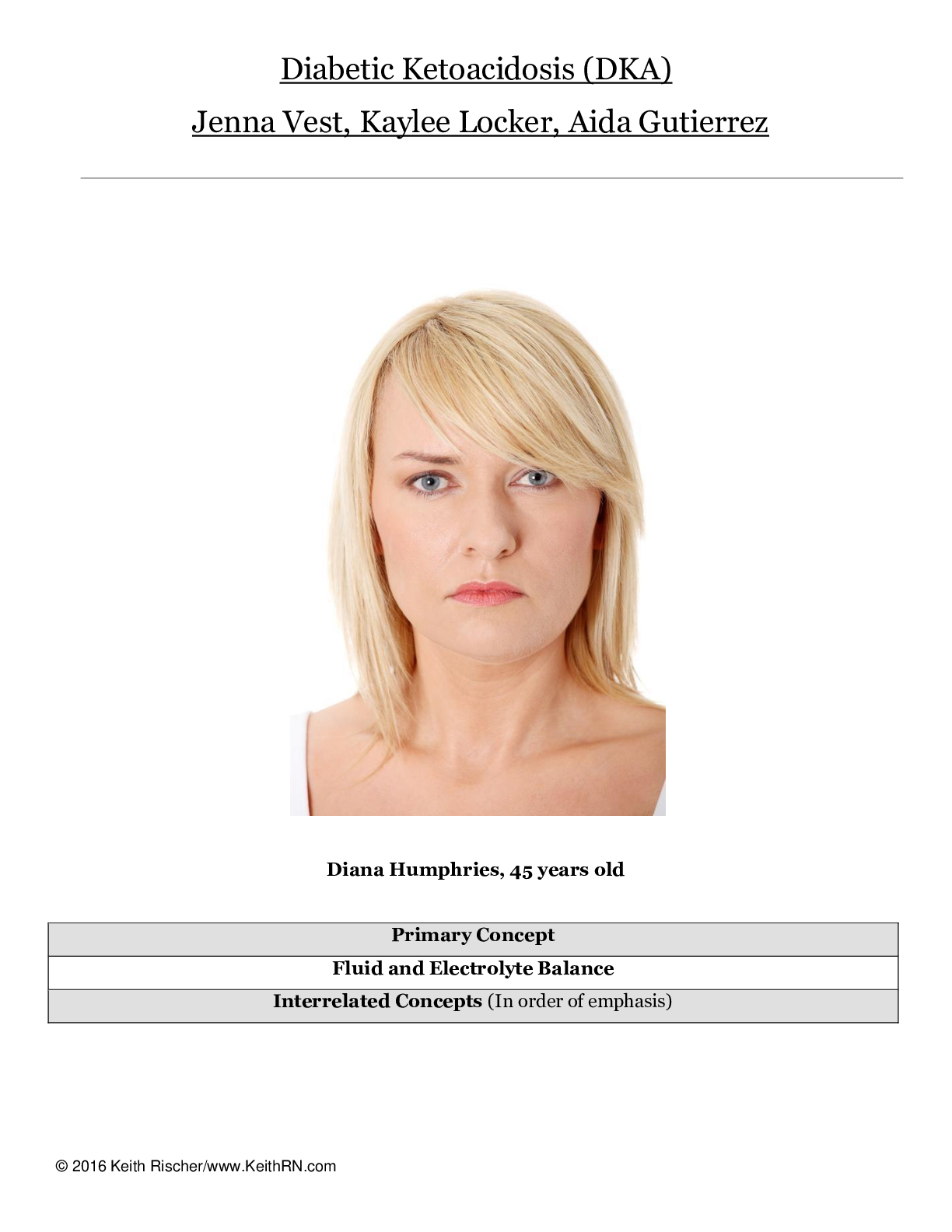
Reviews( 0 )
Document information
Connected school, study & course
About the document
Uploaded On
Feb 21, 2021
Number of pages
24
Written in
Additional information
This document has been written for:
Uploaded
Feb 21, 2021
Downloads
0
Views
55

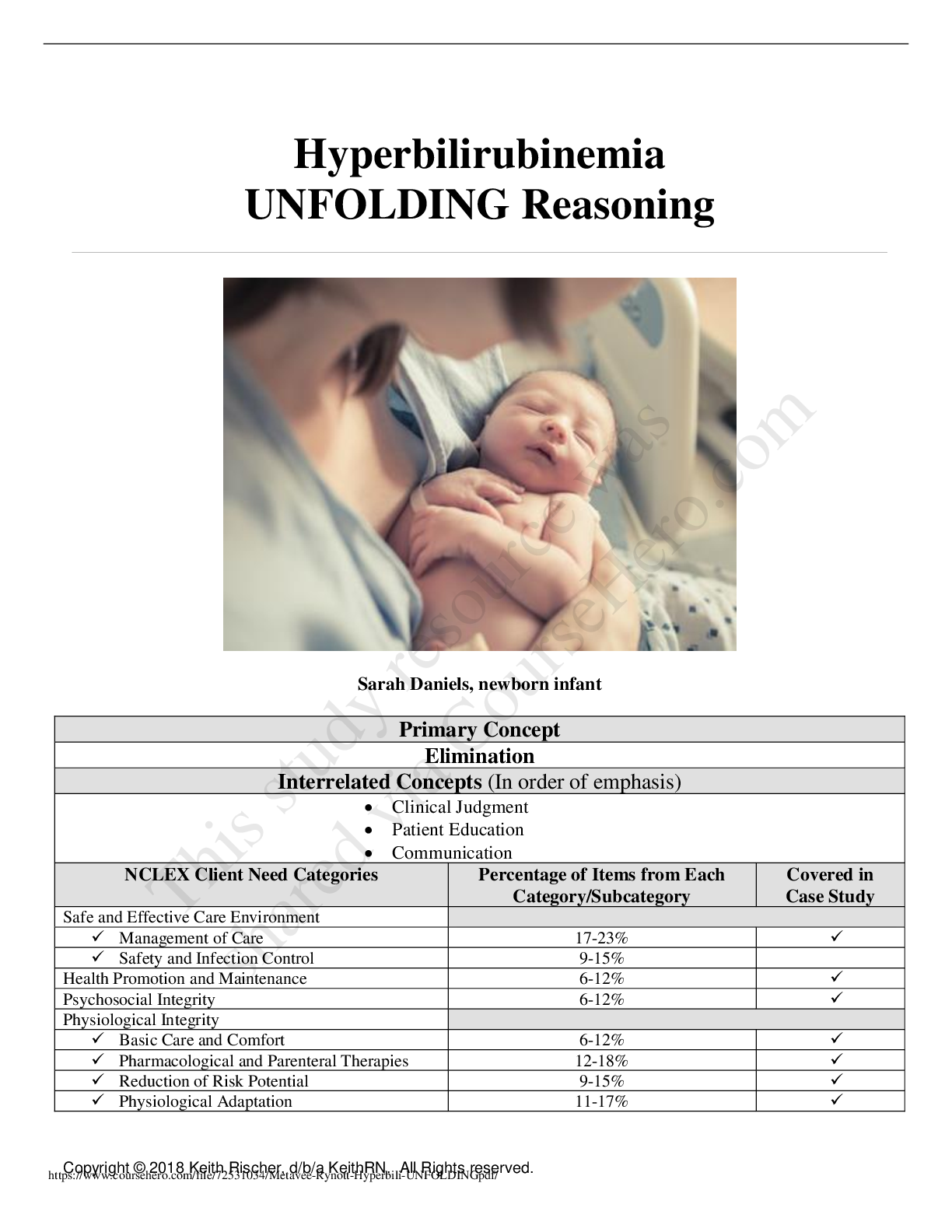
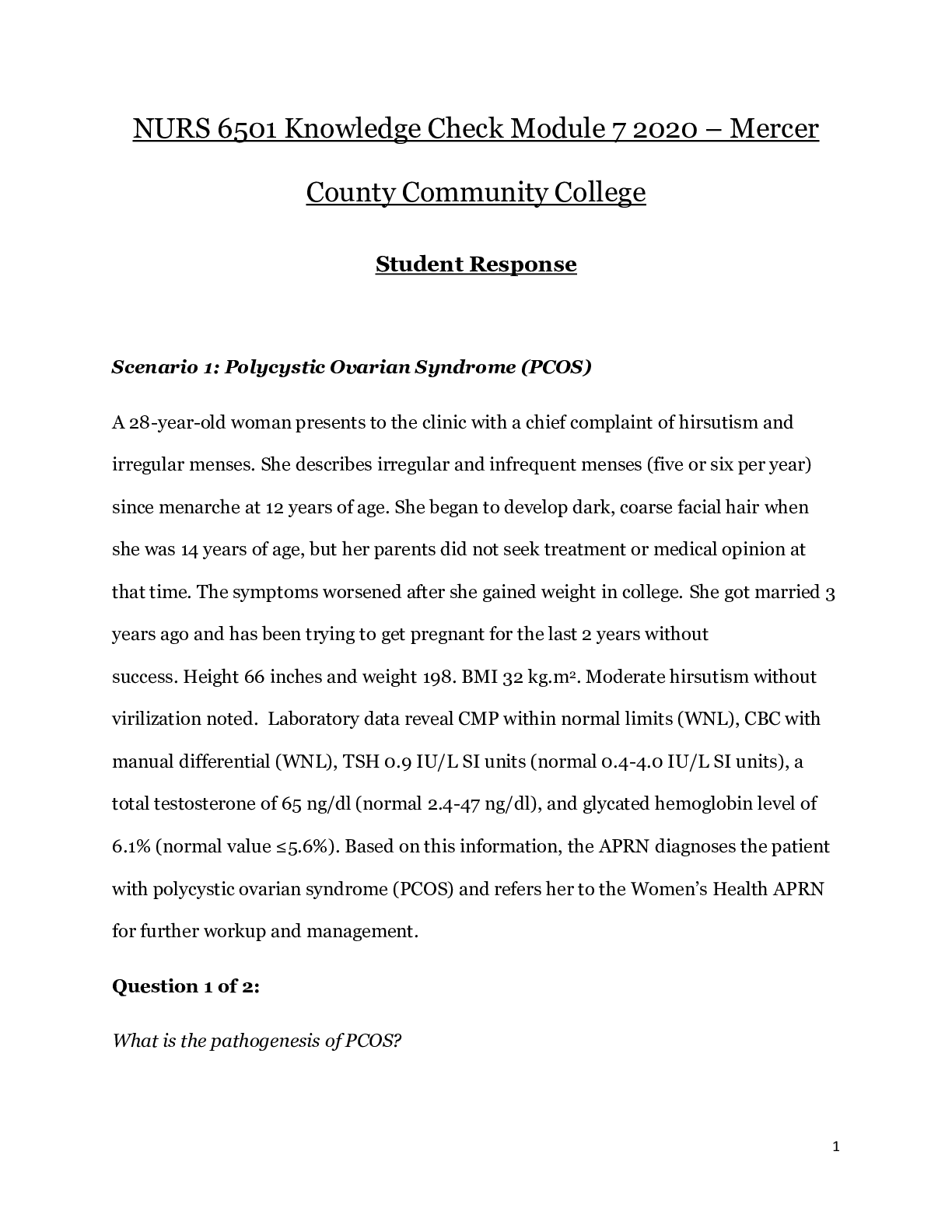
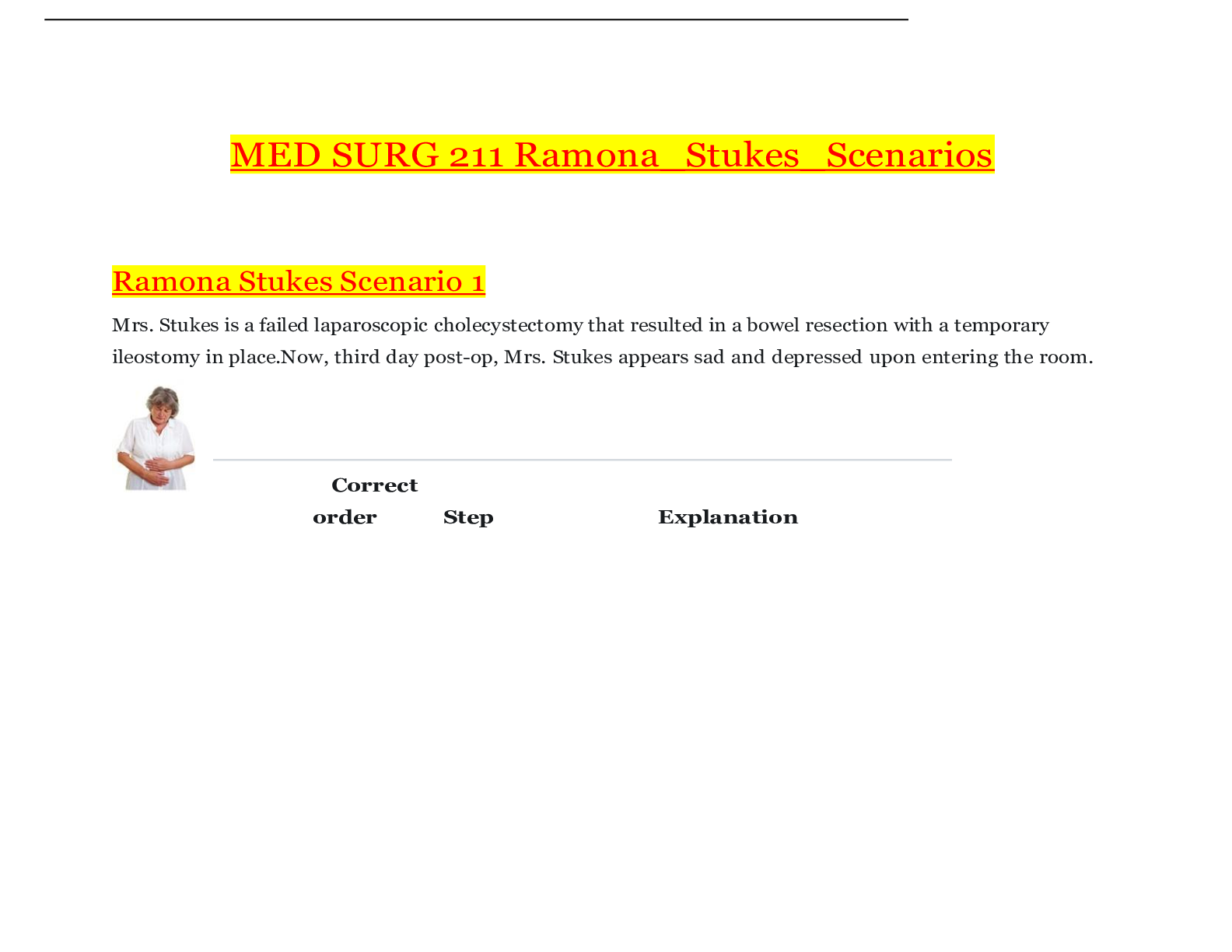

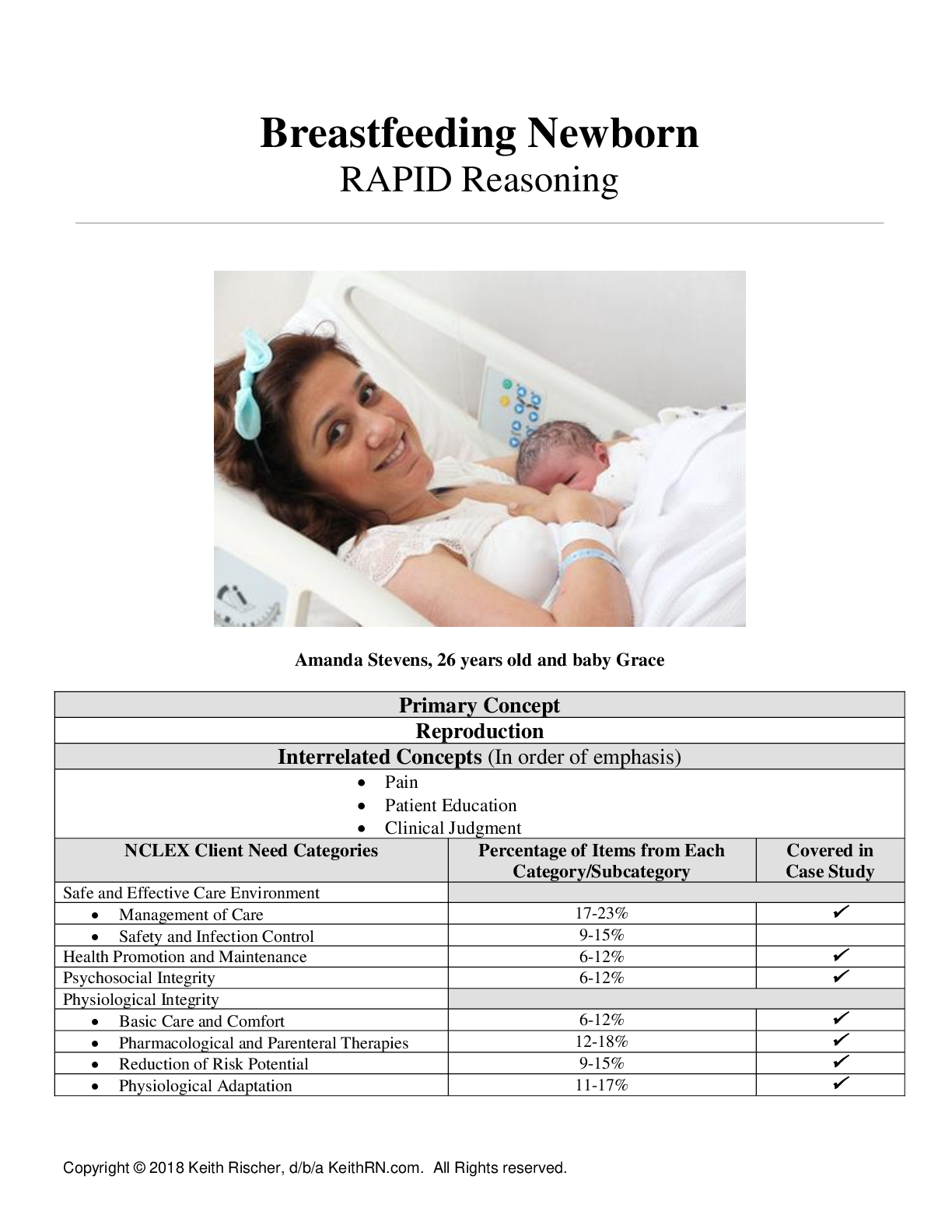


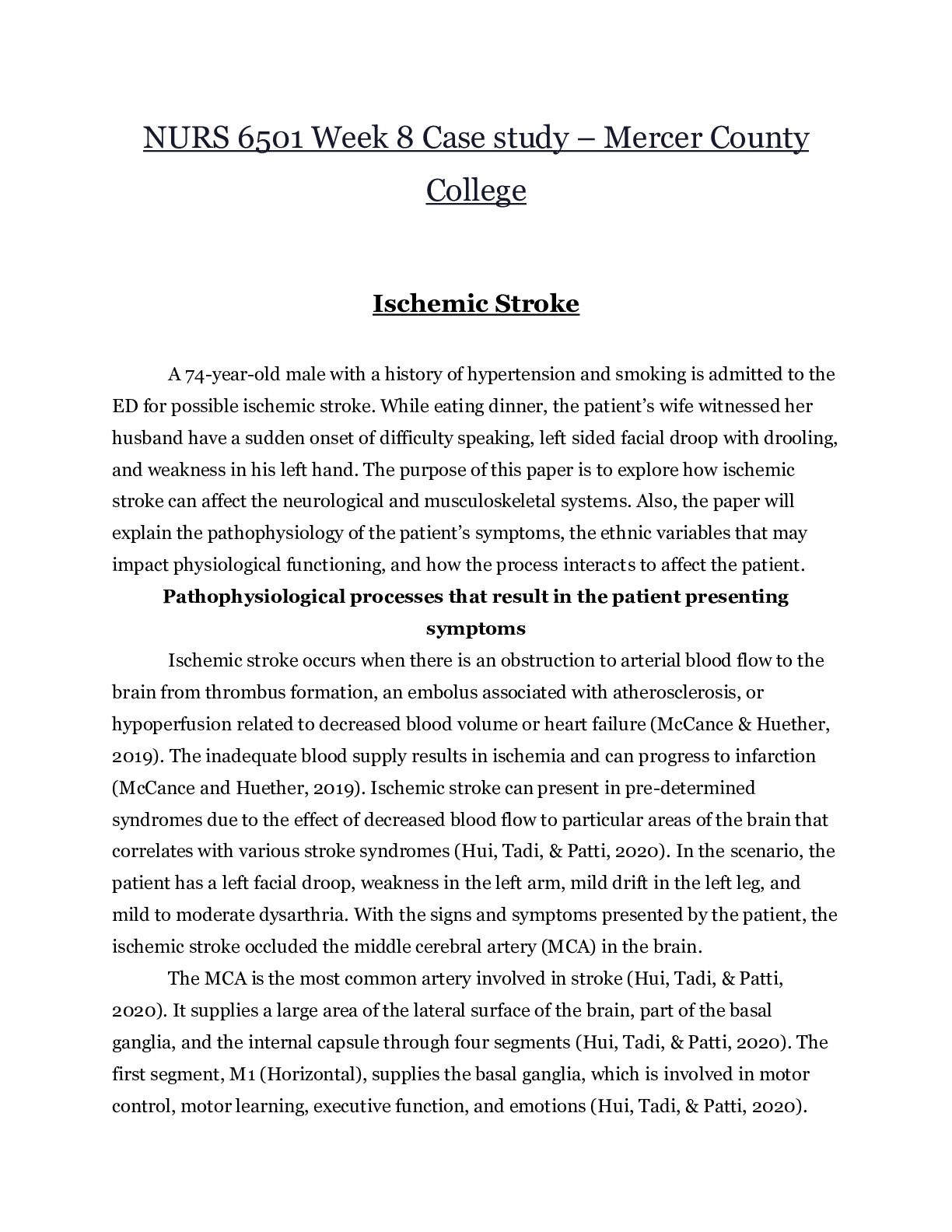
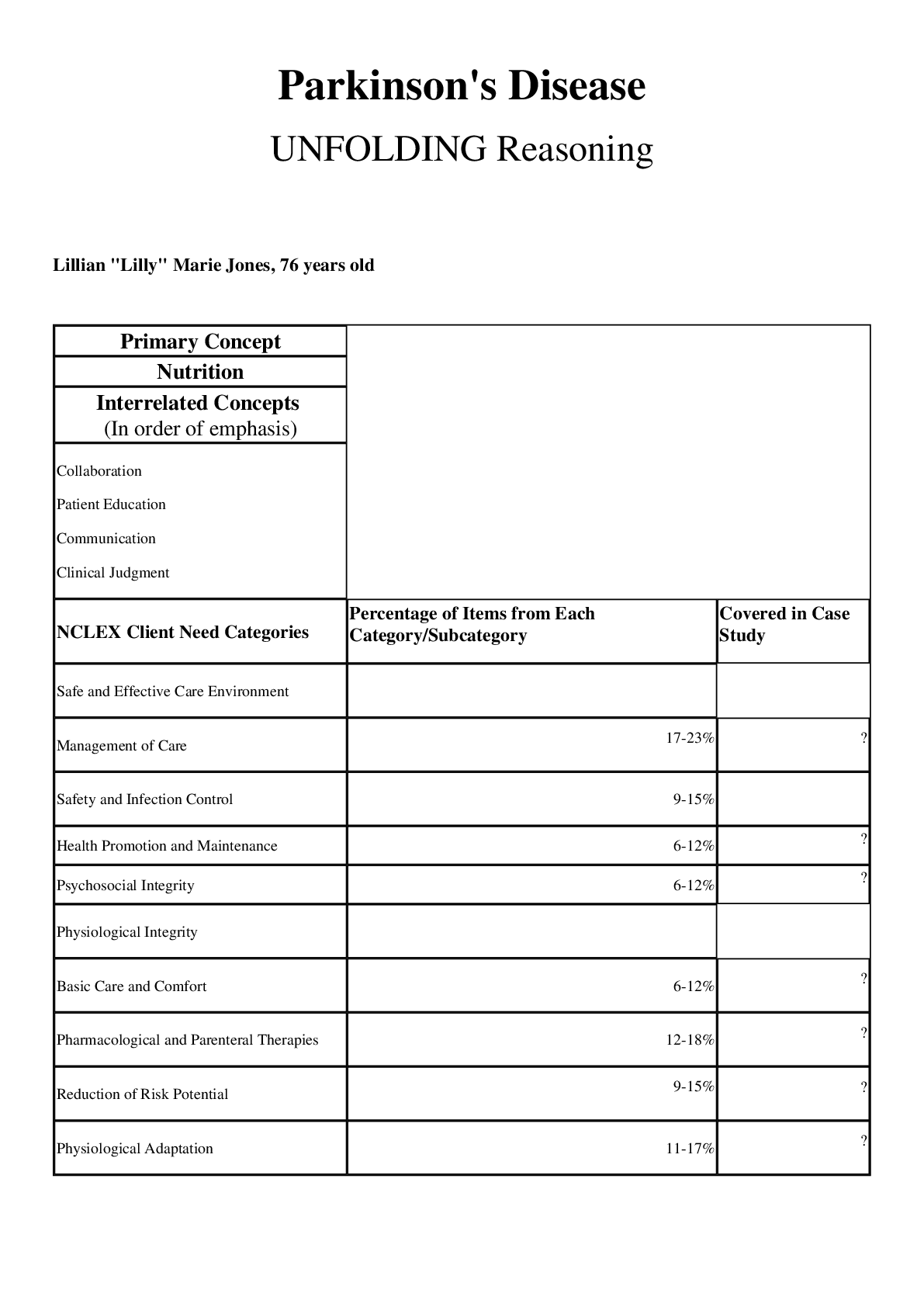
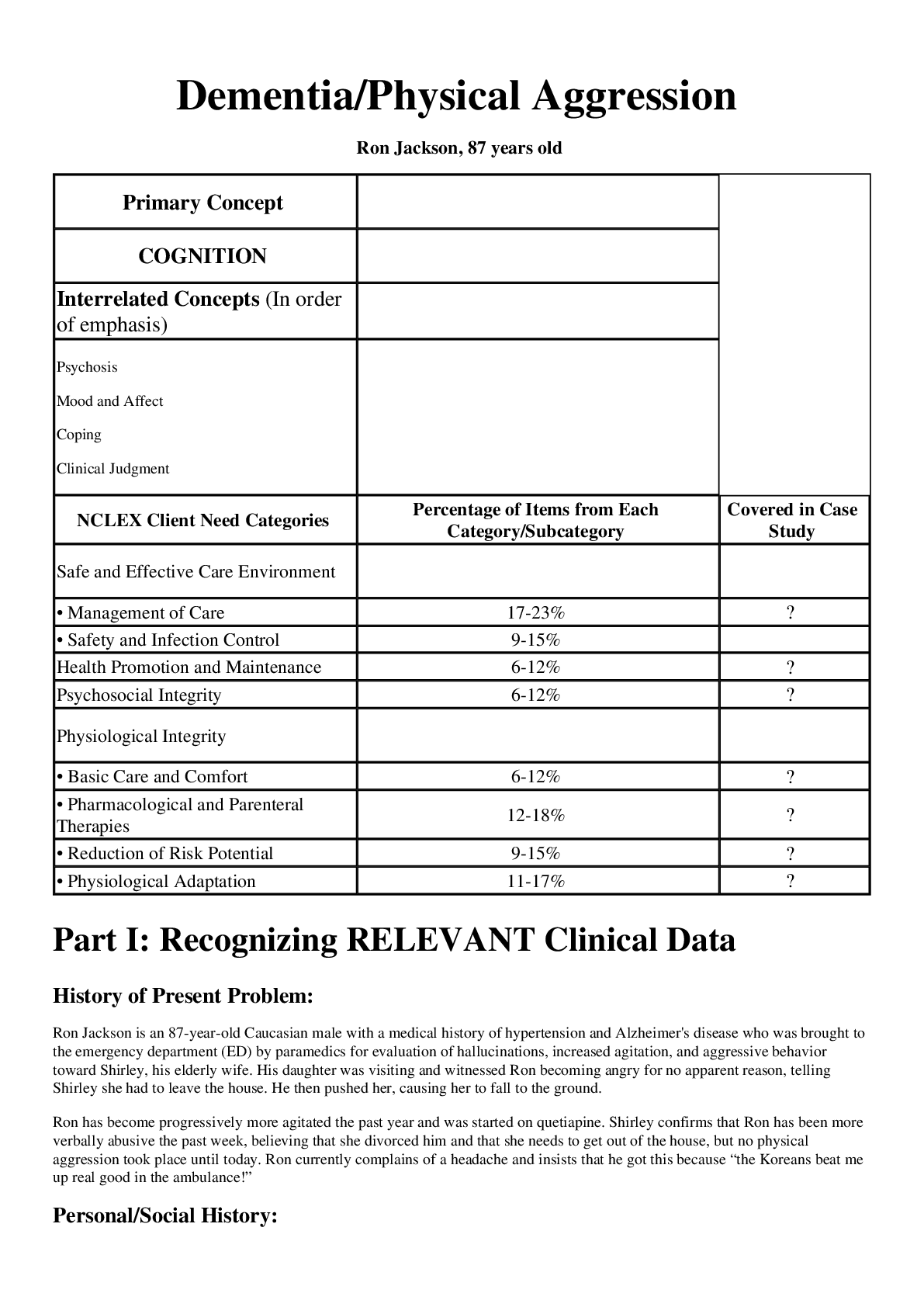
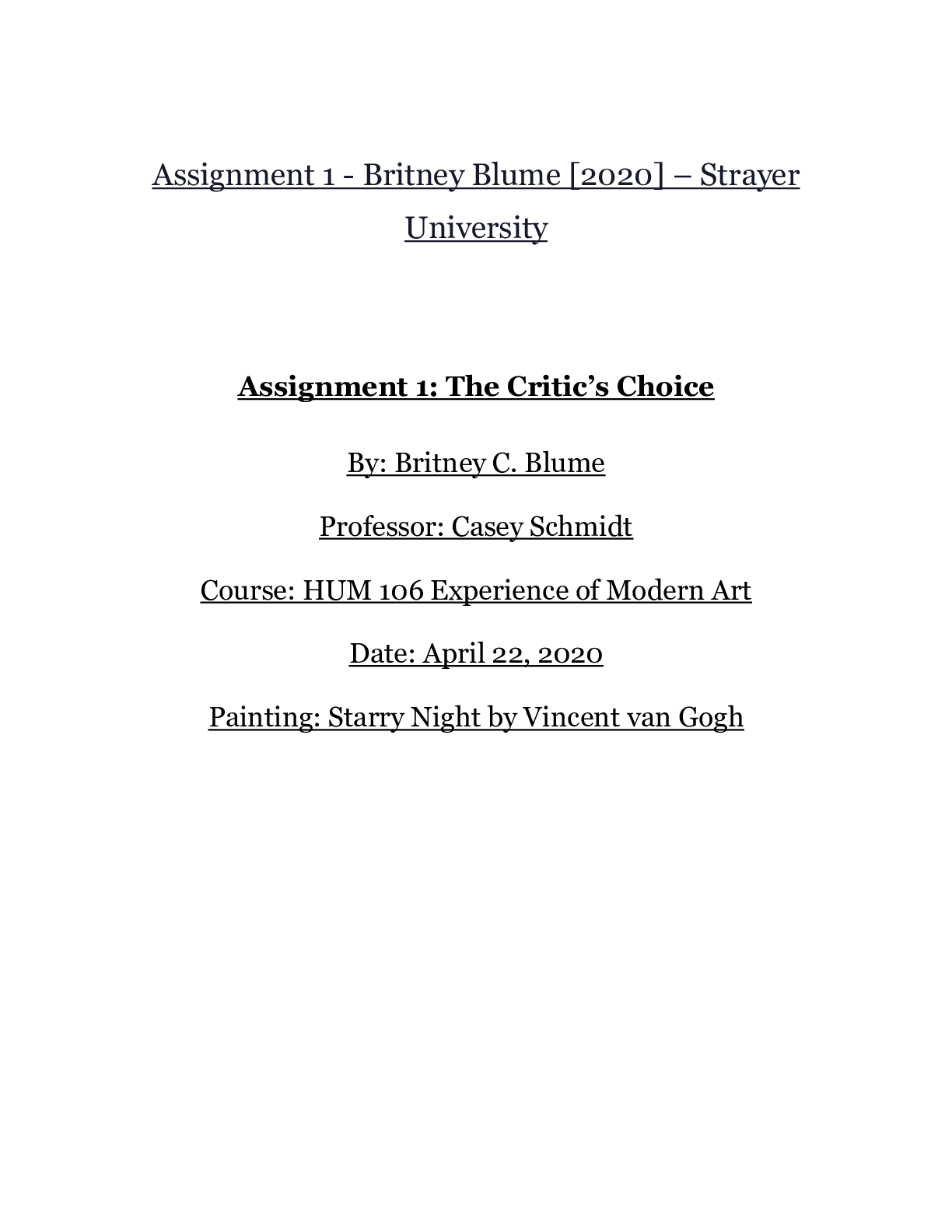
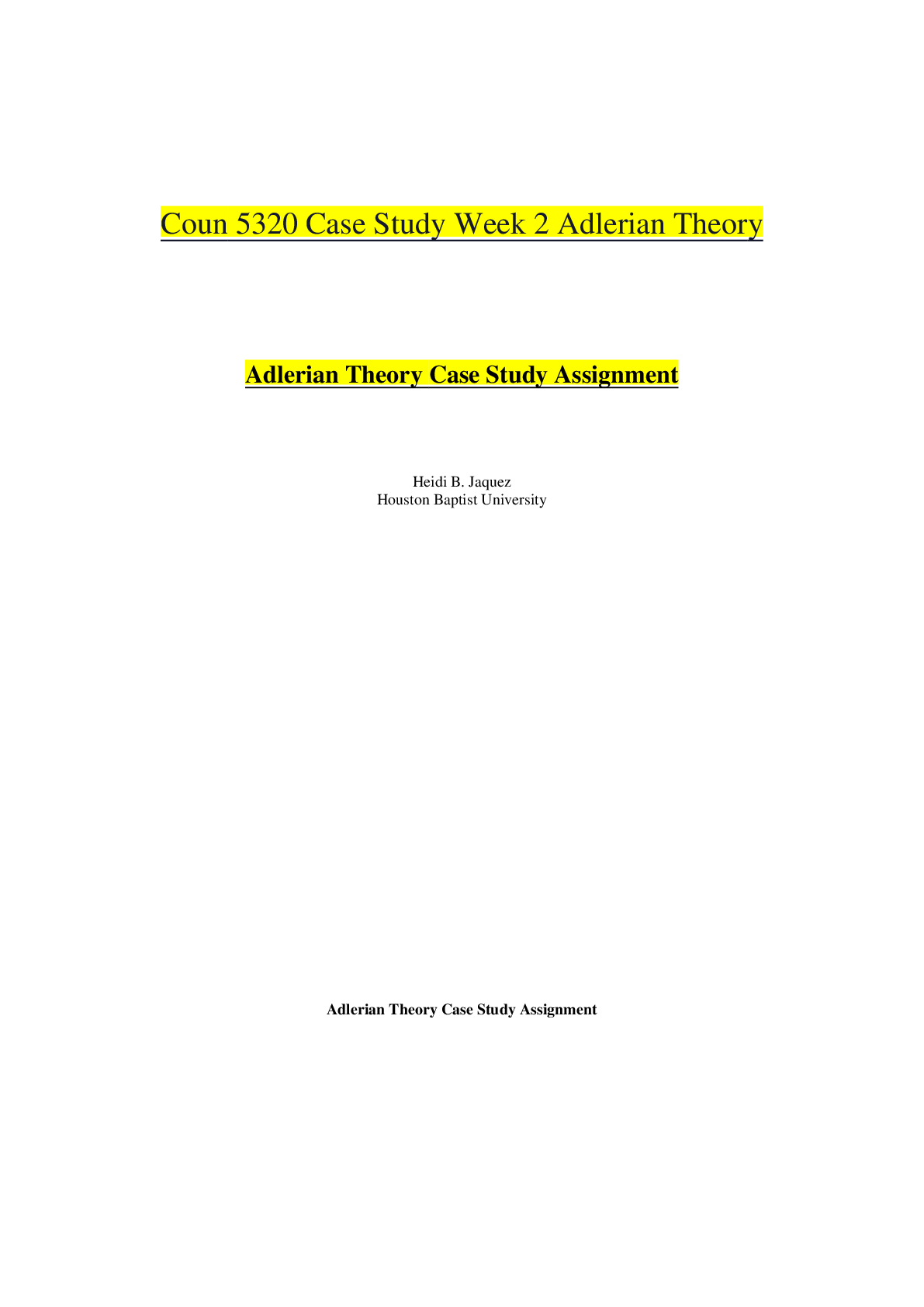


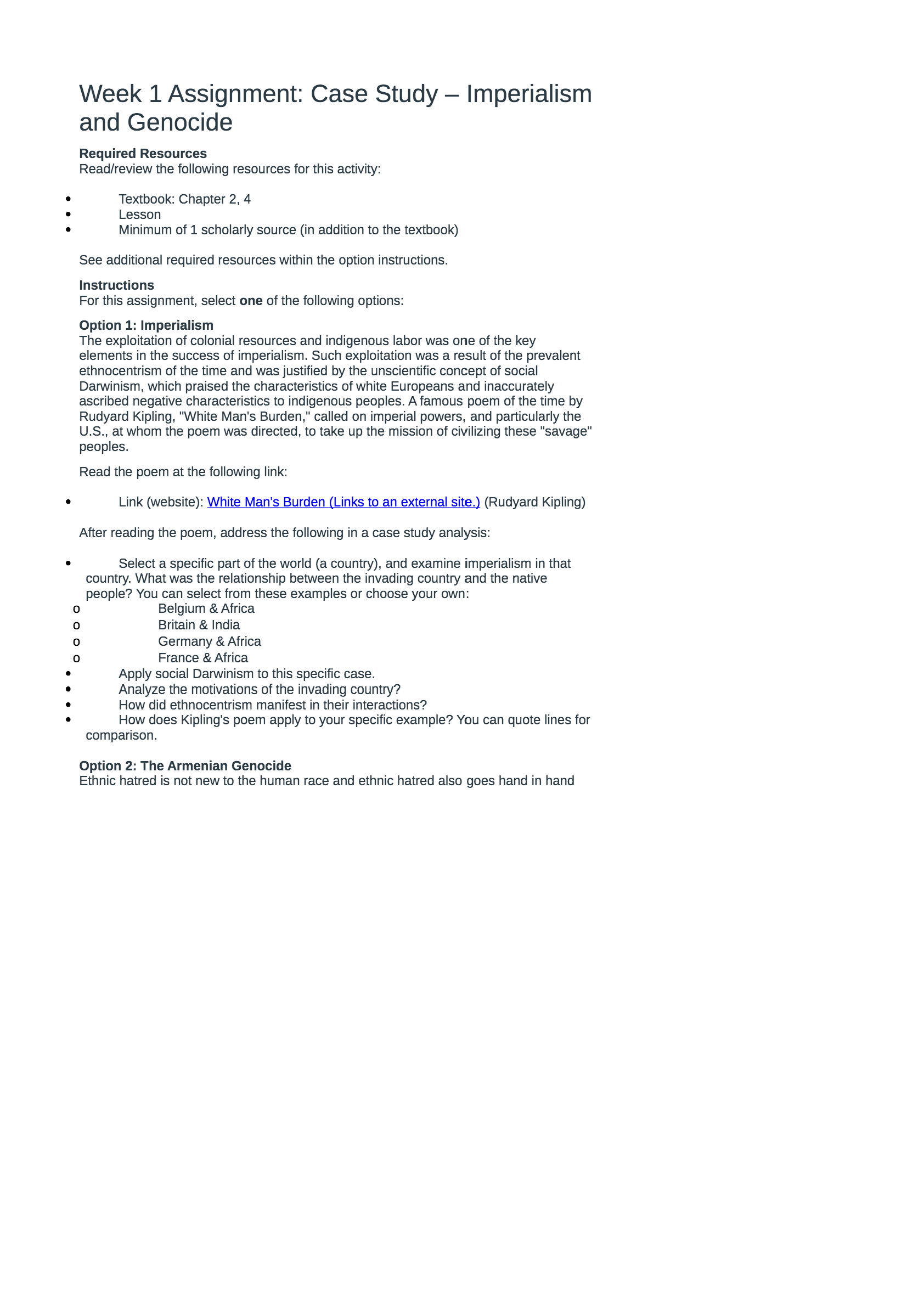


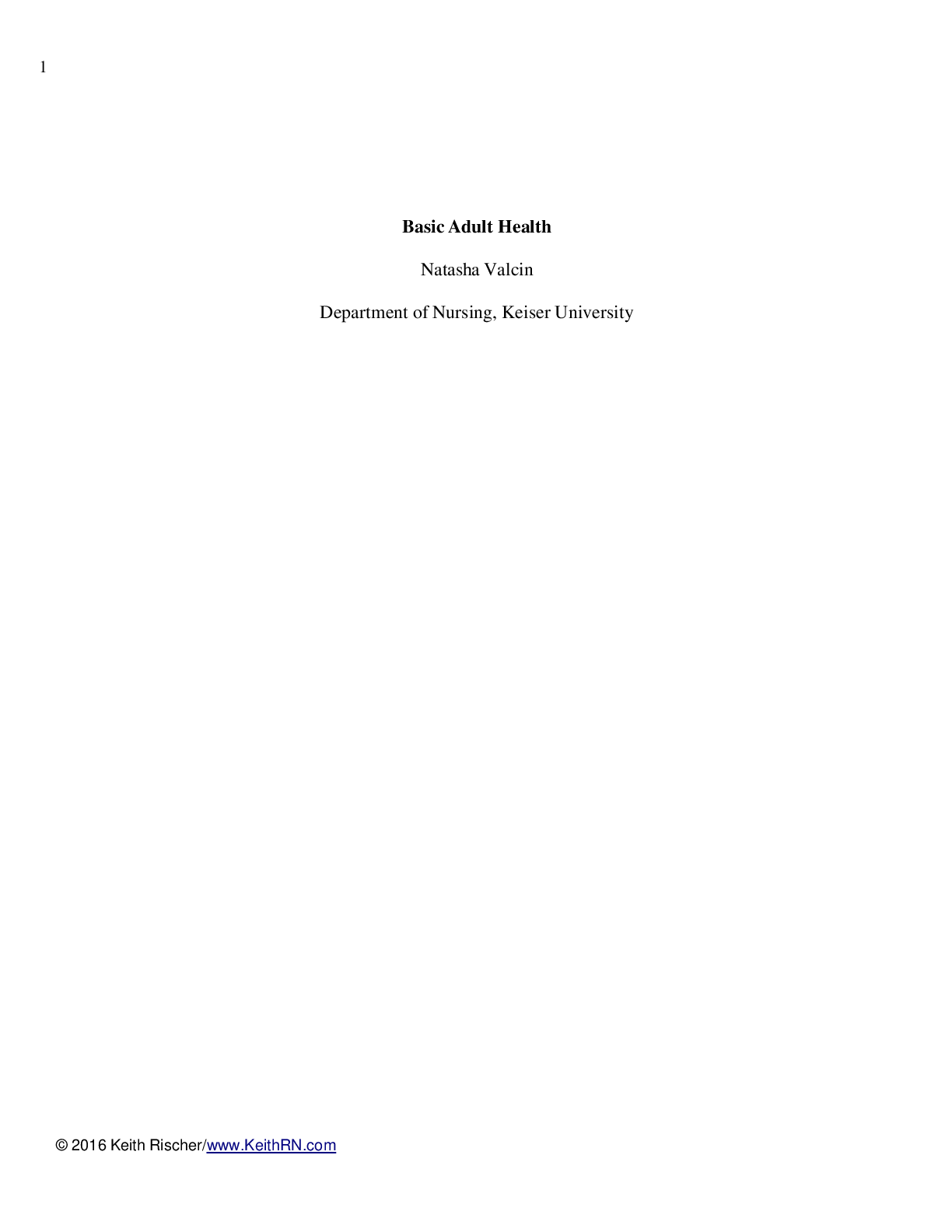
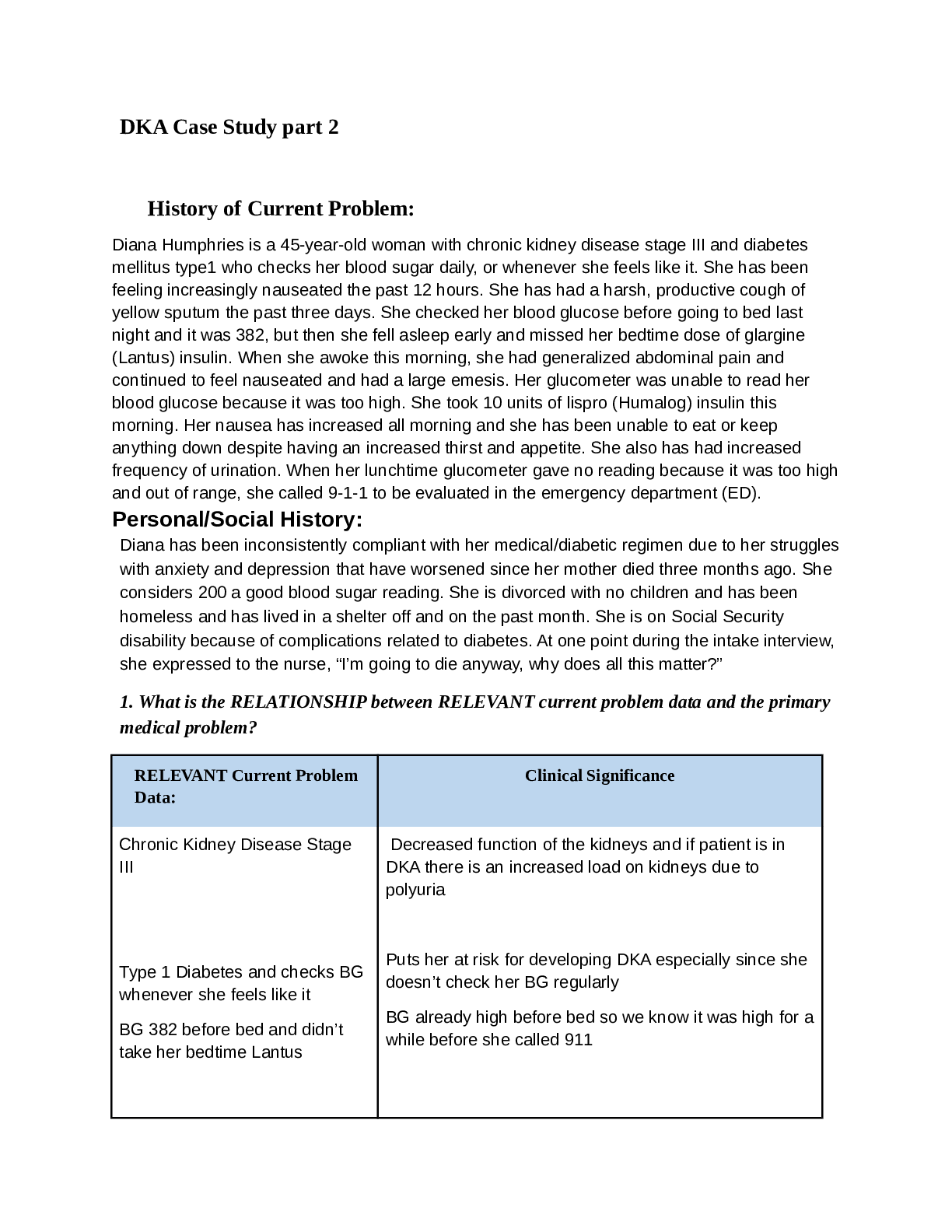
, Diana Humphries, 45 years old.png)
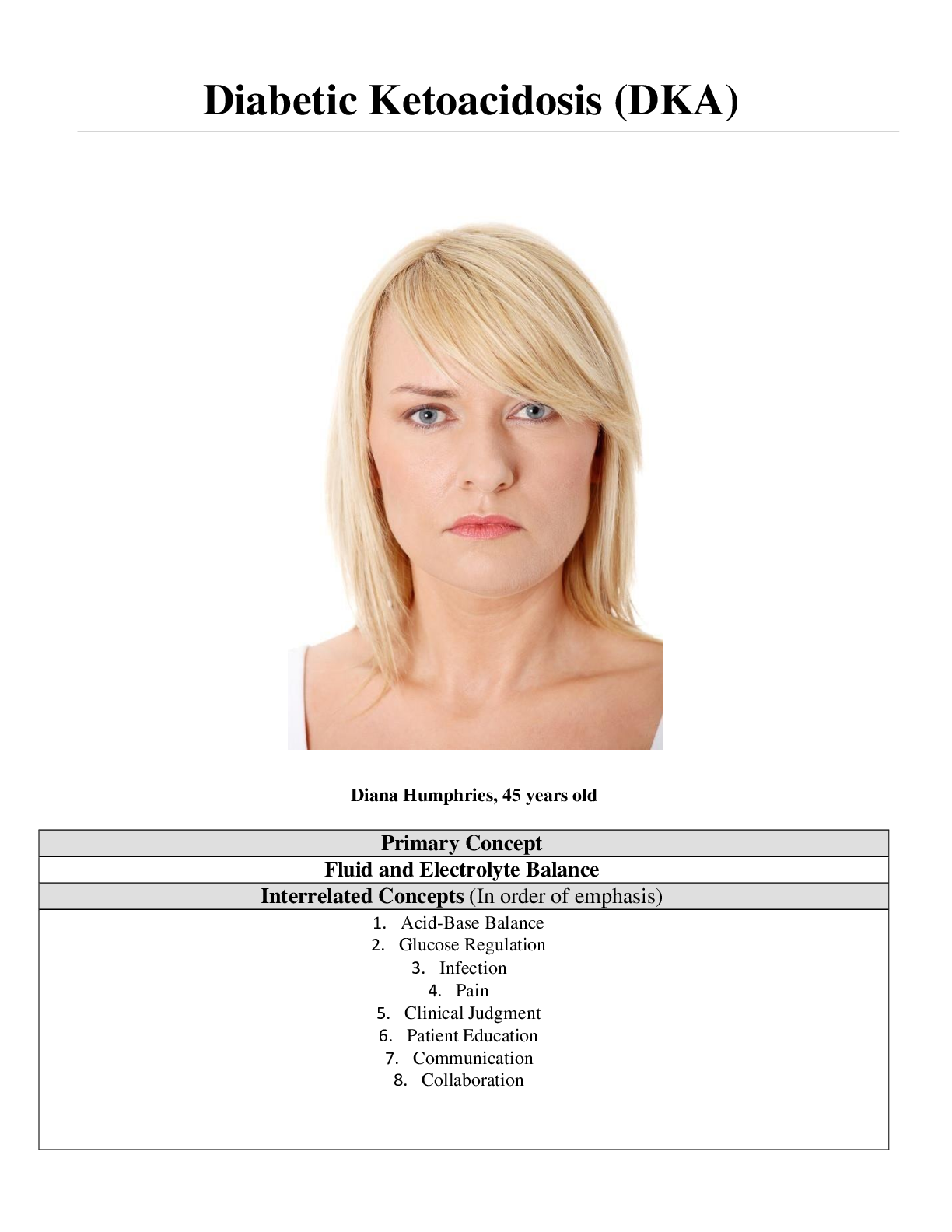
, Diana Humphries, 45 years old, (Latest 2021) Correct Study Guide, Download to Score A.png)
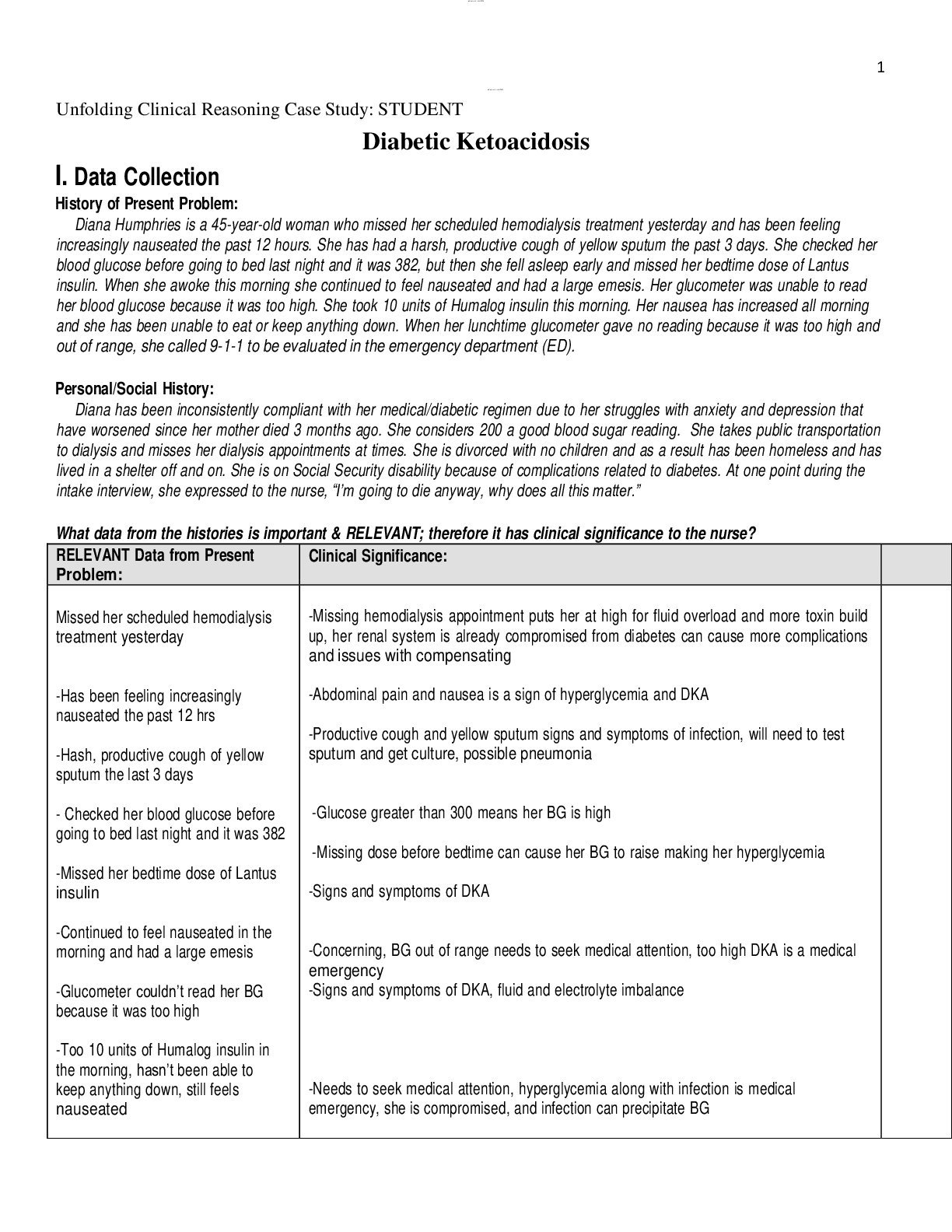

 Diana Humphries.png)

